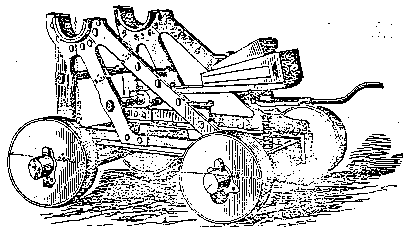The Gun - Rifled Ordnance: Reversion to muzzle-loadersPalliser's ConversionCast iron was confirmed unsuitable as several guns burst. Efforts to reinforce guns of this metal by shrinking wrought iron hoops over their breech ends had been made in several countries but without much success. However, Major (later Sir William) Palliser of the 18th Hussars came up with an idea in 1863 which worked and was adopted in Britain as well as in some other countries, notably America. His method of conversion was as follows: The cast iron gun was bored out, a loose barrel of coiled wrought iron strengthened at the breech end by a coiled 'B' tube and closed by a screw cap, was fitted into the gun as a close mechanical fit. The barrel was secured by a collar screwed into the muzzle and prevented from turning by a plug screwed through the gun near the breech. It was then rifled after which a few heavy proof rounds were fired to expand the barrel into close contact with the exterior case. A tell-tale hole provided to indicate any failure is generally found under the cascable. Palliser's system saw limited service in coast and naval roles, as the old SBML guns converted were too short to achieve the longer ranges being demanded in the 1870s. Conversions were limited to 64-prs and heavier. An interesting example of the gun may be seen at the Army Memorial Museum, Waiouru. The New Zealand Government bought eight of them in 1885 after they had been declared obsolete by the Royal Navy in 1879. They probably got them cheap! Palliser's Carriages and PlatformsWhile still in Naval service Palliser's conversions were mounted on Naval 'four-truck' (four-wheel) carriages built entirely of wood (elm for body and wheels, oak for axletrees), and employed the ancient 'quoin' or wedge as the sole means of elevating the gun. For service in UK coast artillery installations the conversions were returned to the emplacements they had occupied as smooth-bores, mounted on the same wooden 'garrison sliding carriages' which slid back on their sloping wooden platforms on firing, to be hauled back to the runout position by block and tackle. Elevation was by quoin assisted by an elevating screw operated by lever and ratchet. The increased power of the RML conversions soon prompted improvements in carriages, etc; all wooden parts were strengthened with iron plates. Each carriage was fitted with trucks which enabled runout by gravity; at the same time a buffer controlled recoil, the piston rod being connected to the front of the carriage while the cylinder was attached to the platform. The buffer was of the type proposed by Dr C Siemens in 1867, and consisted of a plain piston pierced by a number of holes running in a cylinder filled with liquid. An elevating arc operated by a handwheel through suitable gearing was provided. The carriage permitted 13½° elevation and 8½° depression. Although wooden carriages and platforms could easily have been constructed in New Zealand where suitable timber was readily available, it seems our Government was not prepared to meet the cost. The 1893 report on the state of the country's defence classified half of the 64-pr 71-cwt carriages unserviceable. They had simply been permitted to rot where they stood. In situations where carriages and platforms were not available and guns were exposed to the weather, garrison standing carriages of wrought iron were used. In addition to being better able to stand the weather than the wooden naval types they were an improvement on the latter as they carried an elevating screw operated by a ratchet. These carriages could be adapted for certain other guns, eg RBL 40-pr, SBML 32-pr.
It seems the New Zealand Government could not afford any of these either. WL Ruffell, 1998 previous | index | next | History index | Home |
